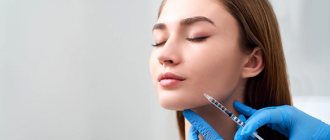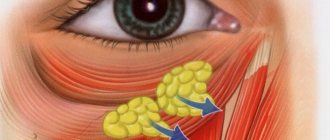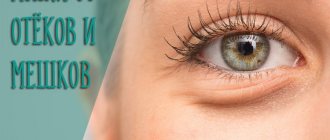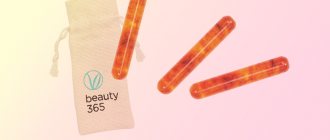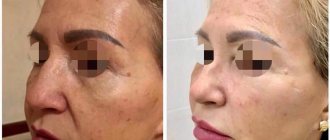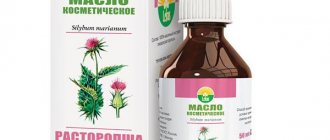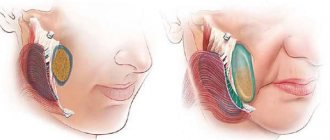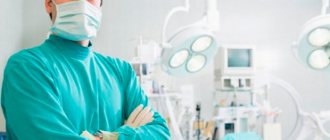Fat traps on the face are a specific area of the face where fat is most often and most deposited - this is the chin. It is the “double chin” that refers to the trap in question. The cause of the problem is considered to be a metabolic disorder, a congenital predisposition, “obesity” as a disease, rapid weight gain, but endocrine diseases, hormonal disorders, and, in rare cases, stooping and incorrect posture can provoke the formation of a “double chin.” The formation of the problem may also be associated with age-related changes - the subcutaneous fat layer increases naturally.
Methods of disposal
remove fat traps on the face using certain cosmetic aesthetic procedures:
- Thread lifting is advisable for small volumes and the presence of excess skin, “tissue ptosis,” an unclear facial contour, when the expression (“the contour has swollen”) is appropriate, but large fat deposits are not corrected and diagnosed by this method. The threads are introduced through micro-punctures (conductor needles), the result will be restoration of the facial contour and a tightening with a cumulative effect.
- Listing. Hardware lipolysis of radio wave or induced ultrasonic influence - can also be used and can be carried out in the presence of a small amount of adipose tissue in a trap. The advantage of the method: excellent tissue tightening and reduction in the volume of the subcutaneous fat layer during 3-4 consecutive procedures over 6 months.
If the “double chin” is too pronounced, then you may need to use the services of a plastic surgeon. A specialist can offer two solutions to the problem:
- Chin plastic surgery using an open surgical method. A small incision is made in the chin fold with a scalpel, through which plastic surgery of the neck muscles (platysma) is performed and excess fatty tissue is removed, excess tissue is excised, the result will be a clear oval, tightening of the neck and problem area. The effect after plastic surgery lasts for 10-15 years.
- Liposuction. Fat removal is carried out manually or using microcannulas and special equipment - laser, vacuum. This is the most effective way to get rid of fatty tissue in the chin area without incisions. After the operation, lifting or surgical tightening of tissues may be necessary - sometimes they cannot recover to the desired size on their own.
The role of superficial fat packets in age-related changes in the patient’s face. Injection correction options.
Introduction
Today, the concept of structural aging of the face includes a whole range of changes that occur not only in the thickness of the skin, but also in the underlying structures: fatty tissue, ligaments and muscles, and bone structures of the facial skeleton. The aging of these structures is manifested by changes in the relief of the face and deformation of individual areas, the appearance of folds and grooves, and downward movement of soft tissues under the influence of gravity.
It is difficult to overestimate the role of hypertrophy and redistribution of fatty tissue in the visualization of age-related changes in the face, especially in such types of aging as deformation, fatigue and mixed.
Fatty tissue in the facial area is represented by superficial and deep fatty compartments.
The upper longitudinal boundary of the superficial fat compartments is the skin, the lower – the periosteum and the layers of the superficial and proper fascia of the face.
Transverse borders are often dense collagen structures, fixed to the periosteum or fascial sheets on one side, and to the skin on the other side. The function of these structures is support, maintaining the soft tissues of the face in a certain position.
The superficial fatty tissue of the face is divided by ligaments into several fatty compartments. In the anterior part of the face - these are the median frontal, central frontal, supraorbital, infraorbital, medial buccal, nasolabial, mental and supraplatysmal. In the lateral part of the face, three compartments are distinguished: lateral temporobuccal, lateral orbital and lateral subzygomatic.
Deep fat compartments are accumulations of adipose tissue located under (between) the layers of the facial fascia. The following deep fat packs of the face are divided: deep temporal fat compartment, postseptal fat body of the orbit, deep sublevator fat compartment, deep nasolabial fat compartment, deep buccal fat compartment - fat body of the cheek, or Bisha's lump. During the aging process, all fat packets undergo some type of change. Their options are different.
Understanding the changes associated with the aging process that occur in superficial and deep fatty tissues is of great importance for the correct planning of cosmetic correction, both with the help of fillers and with the help of drugs that reduce the volume of adipose tissue.
Among the population of the Russian Federation, people of the Slavic type prevail with developed superficial fatty tissues of the face and, as a result, have deformational and mixed types of aging. The most appropriate type of correction in such patients at the first stage seems to be methods aimed at reducing the volume/hypertrophy of fat bags. After achieving the optimal result, you can proceed to other rejuvenation techniques. In case of deformation and mixed types of aging, it is undesirable to immediately start working with fillers for the purpose of lifting fatty compartments. In this case, there is a risk of getting an inharmonious face.
Table 1. Synergy of action of the active components of Mesosculpt C71.
Rice. 1. Mesosculpt C71 is a sterile, pyrogen-free, viscoelastic, colorless, transparent gel, supplied in a glass syringe with a luer lock, volume 1 ml. The patient's medical record label helps identify the material. Rice. 2. Scheme of administration of the drug Mesosculpt C71.
Drug of choice
Currently, more and more patients are inclined towards methods that have a short rehabilitation period and minimal risks in terms of complications and adverse events after the procedures. Most drugs used to reduce the volume of fatty tissue have a number of undesirable effects. But the Premierpharm company (the official and exclusive representative of ABG Lab (USA) in Russia) has a unique injectable drug Mesosculpt C71 with lipomodeling technology and the reduction of local fat deposits in the face and submental area [Fig. 1].
The uniqueness of Mesosculpt C71 lies in its specific mechanism of action on adipose tissue cells. For the first time, the liporeducing effect is achieved not due to cell death, but by a physiological mechanism with preservation of their viability [1 – 3]. Mesosculpt C71 has a comprehensive effect on the regulation of metabolic processes in adipose tissue at the cellular and tissue levels, without having a toxic effect on adipocytes, inhibits the process of formation and increase in new fat cells, stimulates the burning of fat contained in fat cells, while simultaneously having a positive effect on the condition of arterial and venous vessels of the face, stimulating microcirculation and fluid outflow. Promotes restructuring and remodeling of the skin of the face and neck.
All effects of Mesosculpt C71 are synergistic [Table 1], according to the mechanisms of action they represent an influence on the activity of normal biological pathways regulating fat metabolism and in total contribute to a sustainable reduction in the volume of adipose tissue:
- white adipocytes begin to more actively utilize fats in mitochondria, and are also partially “reprogrammed” into brown-like (beige), acquiring the ability to utilize lipids with the formation of heat. Active “burning” of fatty acids occurs, cells decrease in size, stop accumulating fats, the number of mitochondria increases, their structure changes in the direction of more active,
- adipogenesis is blocked: the differentiation of preadipocytes into adipocytes is inhibited,
- lipogenesis is suppressed and the flow of lipids into adipocytes is blocked, atraumatic lipolysis is stimulated due to the activation of lipase enzymes that break down triglycerides of fatty acids,
- the excretion of metabolic products of adipose tissue is enhanced due to the formation of autophagosomes and activation of the circulatory and lymphatic systems,
- remodeling processes in the skin are stimulated to achieve lifting and revitalization.
Indications for use
- excess volumes of local fat deposits of varying degrees of severity in the middle and/or lower thirds of the face, submental area and neck,
- persistent swelling and pastiness of the face,
- gravitational ptosis I – II degrees,
- loss of clear contours of the oval face,
- deformation, fatigue and mixed morphotypes of aging.
Contraindications
- acute inflammatory processes (acne, herpes) or active manifestations of chronic dermatoses in the area of proposed injections,
- hypersensitivity to the components of the drug,
- autoimmune diseases and/or taking medications to correct these conditions,
- permanent implants in the area of the proposed procedure,
- pregnancy and lactation,
- age under 18 years.
Rice. 3 – 4. Marking of the administration of Mesosculpt C71 using the example of two different patients with different morphotypes of facial aging.
Rice. 5 – 8. Injection of Mesosculpt C71 into the nasolabial fat compartment.
Procedure protocol
Before starting the procedure, you need to remove makeup, and before introducing Mesosculpt C71, treat the skin three times with a skin antiseptic solution. Injections of the drug are practically painless (you only feel the needle stick) and do not require anesthesia.
The recommended needle for insertion is 32G (0.23...6/13 mm).
The choice of needle length (6, 8 or 13 mm) depends on the severity of subcutaneous fat deposits. The points of administration of the drug are indicated in Figures 3 – 5. The technique of administration is infiltration.
- The needle is inserted at an angle of 90 degrees to a depth of 6–13 mm.
- The skin fold is grasped with the thumb and forefinger, and the drug is injected into it [Fig. 5 – 11].
- The amount of the administered drug is 0.05 - 0.1 ml per injection (depending on the severity of subcutaneous fat deposits, the degree of gravitational ptosis, if necessary, can be increased to 0.15 ml per injection).
- The whole process takes no more than 10 – 15 minutes.
After the drug administration procedure, a final antiseptic treatment of the skin with a 0.05% chlorhexidine solution is carried out. It is recommended to apply the Meso-Wharton P199™ Post-Treatment Mask with a cooling effect [Fig. 16].
Rice. 9 – 10. Injection of Mesosculpt C71 into the subcutaneous fat in the submandibular area.
Rice. 11. Example of introducing Mesosculpt C71 into the supraplatysmal submental fat pad.
Correction result
As a result of a course of procedures, Mesosculpt C71 allows you to remove the “double chin”, emphasize the line of the lower jaw, restore the lost clear contours of the neck and oval of the face, reduce the overhang of nasolabial folds, correct hypertrophied malar fat packets, reduce the volume of buccal fat compartments (without surgical removal of Bisha’s lumps) , tighten the skin and improve its quality.
Rice. 12 – 14. An example of introducing Mesosculpt C71 into a deep buccal fat pad - Bichat's lump.
Rice. 15. Example of introducing Mesosculpt C71 into the malar fat compartment. Rice. 16. The final stage of the procedure: applying the Meso-Wharton P199™ Post-Treatment Mask.
The procedure does not require a long rehabilitation period. People around will not notice that the patient had a procedure with a cosmetologist. In the first 10–15 minutes after administration of the drug, slight post-manipulation hyperemia and a feeling of warmth at the injection site are possible.
The sensations go away on their own.
Authors: Kristina Kozhina, Ph.D., cosmetologist, dermatovenerologist, Moscow. Larisa Berzegova, Ph.D., cosmetologist, dermatovenerologist, trichologist, Moscow. Evgenia Sklyarova, cosmetologist, dermatovenerologist, Moscow. Evgenia Reshetnikova, cosmetologist, dermatovenerologist, Moscow. Anna Grigorieva, cosmetologist, dermatovenerologist, Moscow. Vasily Ashapkin, PhD n., Moscow.
Magazine: Appearance. Esthetic guide №1(34)
Relapse Prevention
Facial plastic surgery helps to cope with the problem of a “double chin” at any age. But after the operation you should not relax - relapses are likely. Therefore, you need to adjust your lifestyle - change your diet, give your body physical activity, regularly undergo facial massage sessions and perform special gymnastics for the face.
How to get rid of fat traps on the face is decided by the doctor - the choice of method is made taking into account the patient’s age, assessment of the condition of the facial skin, body weight, and the presence of contraindications to surgical intervention.
By seeking help from our plastic surgery medical center, each patient will receive full assistance - from the initial consultation to recovery after surgery. The call will give you the opportunity to get preliminary estimates of the cost of the service and make an appointment with a doctor. The professionalism of surgeons and full technical equipment are a guarantee of positive results.
Causes of excess fat?
Subcutaneous fat on the face, especially around the eyes, cheeks and chin, can appear in both men and women. There are several reasons for this. The most important thing is a general increase in body weight due to low mobility and unbalanced nutrition, poor sleep and drinking disorders. Another factor is alcohol consumption. Fat is deposited on both the figure and the face. Secondly, poor posture contributes to the deposition of fat on the double chin and cheeks. Thirdly, genetic characteristics. Many people have their own personal problem areas where fat accumulates first. Jowls, chubby cheeks, Bish's lumps, and a sagging chin greatly spoil the oval of the face and visually add age.
Also, the appearance of the face can be worsened by deposits mistaken for fat: swelling and aging skin. Over time, the skin loses tone, becomes flabby, dehydrated, and wrinkled.
The reason why the face is not contoured enough and fat deposits have occurred is determined by the cosmetologist at the appointment. A professional will understand the situation and select the correction method that is most suitable in each specific case.
Methods for correcting facial contours
Modern cosmetology and plastic surgery offers many options for correcting age-related changes, including jowls:
- Administration of drugs based on botulinum toxin.
- Ultrasonic lifting.
- Contour plastic with fillers.
- Various types of plastic surgery.
- Thread lifting.
- Lipolitics.
Not all methods are equally effective and applicable to every patient. Surgical correction has good results, but is used to a limited extent due to postoperative risks and long recovery times. Fillers add volume, but are not suitable for patients with a sufficient amount of their own fatty tissue, since the result of the procedure will be an unnatural puffiness of the face. Botulinum therapy affects muscle tissue, helps smooth out wrinkles, but has no effect on the cause of sagging.
Available and effective methods in this case are thread lifting and the use of lipolytics. They affect the main component of age-related changes - subcutaneous fat deposits. The methods combine safety and good cosmetic results.
Principles of treatment, hardware treatment methods
Therapy is aimed at various tissue levels and solving a number of problems:
- improvement of quality and functional parameters of the skin;
- correction of fatty tissue volumes;
- reposition of soft tissues;
- myomodeling;
- replenishment of skeletal support for soft tissues.
To correct altered facial contours, the following cosmetic ingredients : cocoa butter (Cacao Butter), Nannochloropsis Oculata Extract, Kigelia Africana Extract, Goat Milk, Annuus (Sunflower) oil Seed Oil), etc.
You can replenish lost volumes, correct the shape of your face and improve the condition of your skin with injections of hyaluronic acid . They increase the volume of intercellular substance, help maintain the three-dimensional structure of the intercellular matrix, trigger biological stimulation of natural metabolism, moisturize the skin, participate in the transport and distribution of water in tissues, and enhance the protective function of the skin. A number of hyaluronic acid preparations allow you to mechanically even out the contour of the face, but this method only lasts for a few months.
You can make facial contours clearer with the help of lifting or reinforcing mesothreads . of botulinum toxin helps solve this problem (again, temporarily).
A powerful, but quite traumatic method of correcting changes in the oval of the face is plastic surgery (for example, a circular facelift). However, this solution is not indicated for all patients and has the potential for serious complications.
Hardware cosmetology today offers 2 main methods for improving the contours of the oval face: high-intensity focused ultrasound and RF lifting . Unlike laser techniques, they are able to act at a greater depth, triggering remodeling processes not only at the level of the dermis, but also in the subcutaneous fat and even SMAS. RF techniques based on deep heating, such as Thermage and TriPollar RF (Maximus and geneO+), can reduce the volume of local fat deposits by activating lipolysis.
RF and focused ultrasound cannot be considered as an alternative to plastic surgery - however, they can postpone plastic surgery for a while.
Questions from our users:
- facial contour correction
- facial contour correction cosmetology
- facial contour correction with fillers
- facial contour correction massage
How does thread lifting work?
This method of face lifting is based on the introduction of threads made of organic materials into the skin with thin needles. After a certain time, the threads break down into carbon dioxide, water or organic acids, which are then utilized by the body. One of the main effects of threads is stimulation of the synthesis of collagen fibers and enhancement of the reparative properties of the skin. Moreover, water molecules formed after resorption are retained in the dermis, increase skin turgor and prevent it from sagging. Thread lifting allows you to achieve the following effects:
- Move the subcutaneous fat and fix it in the right place.
- Form an additional frame that prevents sagging of soft tissues.
- Stimulate collagen formation.
- Eliminate sagging skin and increase its elasticity.
- Improve the general condition of the skin.
Not all threads have a lifting effect. Some perform only a frame function. The result is influenced by many factors: material, composition, installation depth, initial condition of the skin.
The threads are made from several biomaterials: polydioxanone, polylactic acid and caprolactone. Polydioxanone is absorbed the fastest, and caprolactone remains in the tissues longer than others. To achieve a lifting effect, the threads are introduced not into the epidermis, but into the deeper layers of soft tissue. Passing through the subcutaneous fat, the thread slightly pulls it along with it to the place of its fixation. The threads are usually fixed near the ligaments of the face. When correcting jowls, the thread is most often held by the zygomatic ligament.
The final result is also influenced by the surface of the thread: smooth, spiked or notched. The even texture of the thread does not allow the skin to be tightened and fixed, so after the procedure the threads “slide” from the installation site, and the lifting effect is quickly lost. Barbed threads are best suited for tightening. They are well fixed in tissues for a long time and lift them.
With thread lifting, several correction options are possible. The choice of method depends on the severity of age-related changes and prolapse of soft tissues.
The first option is suitable for patients aged 30–40 years with initial age-related skin changes. It is used to slightly correct the shape of the face and eliminate the initial signs of aging. For this, a small number of threads (2–4) are usually used to tighten problem areas. This option is not suitable for patients with pronounced subcutaneous fat due to the inability of the threads to hold the tissue.
The second method of thread lifting is used in patients 40–50 years old with significant signs of aging, but without significant fat deposits. Typical complaints of patients are the appearance of jowls, pronounced nasolabial folds and general sagging skin. To correct age-related changes, the doctor uses a large number of threads (from 3 on each side).
The third option is applicable for patients over 50–55 years of age or in case of a large amount of subcutaneous fat. The goal of the procedure is to firmly fix the soft tissues and prevent their further prolapse. The doctor may use up to 10 threads or more. The effect of this correction option is the longest lasting.
